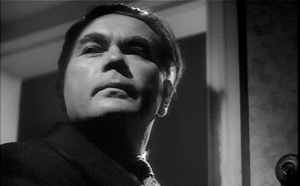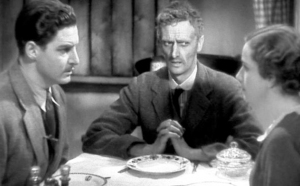The Wrong Man is an odd beast. In some ways it represents a lot of what we’ve come to expect from Hitchcock: an innocent man falsely accused of a terrible crime by the cops etc., but in its execution it is wholly different from everything we’ve seen from the director so far.
In every other “innocent hero falsely accused” Hitchcock story the protagonist had some clue that leads them to the true perpetrator. A description of the criminal; a missing belt; a name on an envelope; a confession etc.
In contrast, the hero in The Wrong Man, Manny Balestrero (Henry Fonda), is accused of bank robbery and taken in by the police for extensive interrogation, but both he and the audience have no real idea why. We’re forced to watch him struggle for justice in a legal system that assumes his guilt, which proves to be an agonising strain on him and his wife, Rose (Vera Miles). There’s no quick-fix clue for our hero to hunt down and resolve the misunderstanding. This is a MacGuffin-less Hitchcock.
Why the more realistic tone? Well, because it was a true story. The 1951 Balestrero trial appealed to Hitchcock’s self-confessed fear of police and he decided he wanted to tell Manny’s story as faithfully as possible.
And when Hitchcock says he wants to do something faithfully, he bloody means it. The film was shot in the actual locations in New York City where the original incidents occurred four years earlier. Even the prison scenes were shot in a jail in Queens with real-life inmates as the extras. The tension you see on Henry Fonda’s face as he’s hauled through that claustrophobic hellhole…that ain’t acting.
Speaking of Fonda, he’s outstanding here. With an understated performance he conveys the overbearing weight of his ordeal making him very relatable. Plus he actually looks like a regular middle-aged bloke, rather than a glamorous Hollywood actor.
Vera Miles is also fantastic as Rose, displaying the crucial fact that false accusations don’t just disrupt the lives of those accused. They affect everyone around them too. Her struggle through the process is as gruelling as his.
The Wrong Man may lack the flashy editing or pulpy stories that made Hitchcock popular, but it smacks of brutal authenticity. Nowadays it’s somewhat overlooked. Absolutely worth checking out.







































